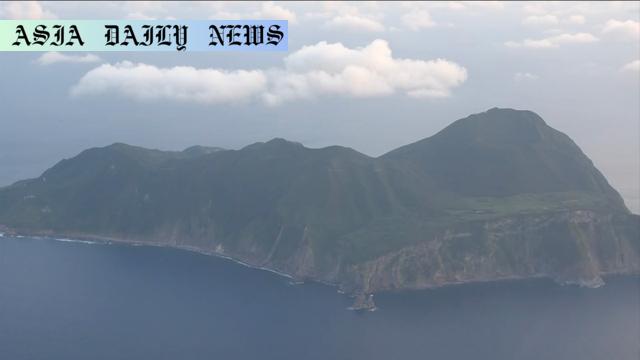Earthquake: The Japan Meteorological Agency warns Toshima Village inhabitants about potential strong tremors and heightened mudslide risks.

A Surge in Earthquakes Rocking Toshima Village
In recent days, Japan’s southwestern Toshima Village has faced a concerning surge in seismic activity. The Japan Meteorological Agency has reported that the village’s Akusekijima Island was struck by a significant earthquake registering a magnitude of 5.5. This seismic event, with an intensity of lower 6 on the Japanese scale, marks the strongest earthquake recorded in the village. Occurring at a depth of 20 kilometers, the quake is part of heightened seismic activity that has left residents wary and officials on high alert.
The region’s seismic activity has not been an isolated event. According to official data, since June 21, the area around Akusekijima and neighboring Kodakarajima has experienced an alarming total of 1,139 tremors, all registering an intensity of 1 or greater. The continuous shaking has brought the dangers associated with earthquakes back to the forefront, with experts cautioning residents about the possibility of aftershocks or even more significant events in the near future.
Potential Risks of Ground Instability and Mudslides
As seismic activity destabilizes the ground in Toshima Village, a secondary, but equally alarming threat looms: mudslides. The cumulative effect of the earthquakes has loosened the soil, raising the risk of ground displacement during periods of rainfall. The Japan Meteorological Agency, recognizing this increased danger, has preemptively adjusted thresholds for issuing heavy-rain advisories and mudslide warnings in the region by 30 percent. Although these measures aim to enhance preparedness, residents are urged to remain on high alert.
The combination of seismic activity and the potential for heavy rainfall creates a dangerous environment for Toshima Village. Beyond the immediate threat to infrastructure and housing, mudslides carry the risk of catastrophic damage to ecosystems, transportation routes, and public utilities. Authorities have called for vigilance from residents while underscoring that they cannot predict an end to this succession of geological activity.
Living Amid Uncertainty
The unpredictability of the situation has placed a psychological and physical strain on residents of Toshima Village. The stress of frequent tremors compounds the risks posed by natural disasters, leaving the community in a state of heightened anxiety. Emergency responders and government officials are working diligently to minimize the impact, but uncertainty remains.
The continued activity may signal shifts in underlying tectonic forces, reminding us of the dynamic and often unpredictable nature of our planet. Over time, local communities, geologists, and policymakers will need to evaluate the outcomes of this seismic episode and implement strategies to better prepare for future events.
A Call for Preparedness and Vigilance
As Toshima Village braces for what may come, the international community should see this as a reminder of the dual challenges posed by natural disasters: immediate damage and long-term resilience efforts. Earthquakes, mudslides, and other disasters necessitate not only real-time responses but also proactive measures to protect lives and livelihoods. In regions prone to earthquakes, investments in robust infrastructure, emergency preparedness, and resilient societal structures remain paramount.
Ultimately, these events in Toshima Village underline the importance of staying informed and prepared in the face of nature’s unpredictability. The commitment of local and national authorities to reducing risks and addressing vulnerabilities offers a glimpse of hope during trying times.
Commentary
Seismic Events Demand Ongoing Vigilance
The recent sequence of earthquakes in Toshima Village serves as both a troubling reminder of nature’s power and a rallying cry for heightened resilience efforts. This unfolding situation highlights the volatile nature of our planet and the necessity for adaptive measures to safeguard communities.
What strikes me most about events like these is their unpredictability. The fact that an island can experience over a thousand tremors in such a short span is astonishing. As a global community, we often focus on mitigating immediate threats, but disasters like this remind us of the importance of long-term resilience planning. Enhanced warning systems, infrastructure improvements, and public education campaigns are critical components of safeguarding areas vulnerable to natural disasters.
Community Strength Amid Adversity
At the heart of this story is the resilience of Toshima Village’s residents. Living under the constant specter of aftershocks and mudslide threats, their ability to maintain daily life is commendable. However, it also underscores the urgent need for support at all organizational levels to reduce the psychological and physical toll on these individuals. Providing communities with the resources they need to stay informed and prepared fosters a sense of security even in unstable environments.
Natural Disasters as Global Learning Moments
It’s worth reflecting on how disasters in one part of the world can serve as educational moments for others. While the situation in Toshima Village is dire, it also offers critical insights for seismic-rich areas worldwide. Learning from these experiences can guide policymakers, scientists, and communities to improve disaster response frameworks globally. In the face of adversity, our interconnectedness as a global community remains a vital source of hope and adaptation.


